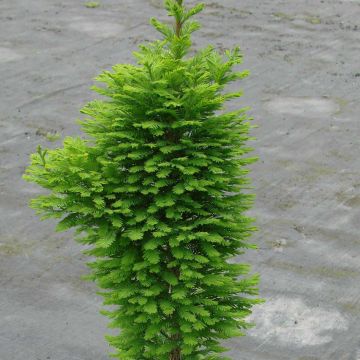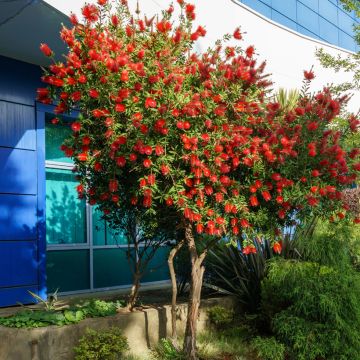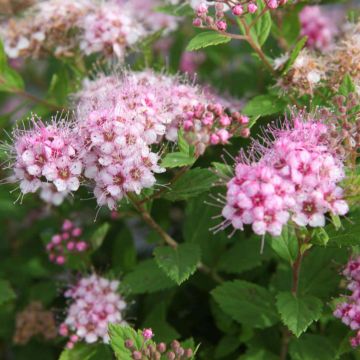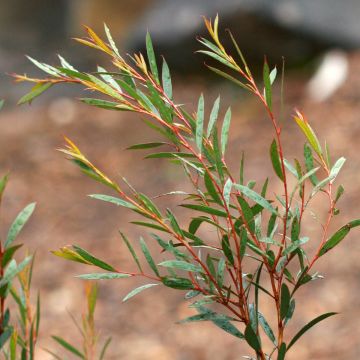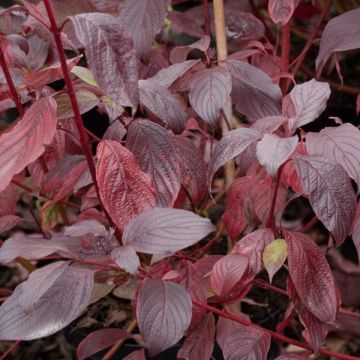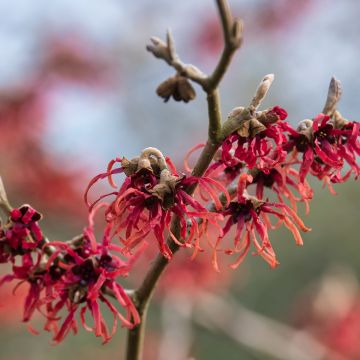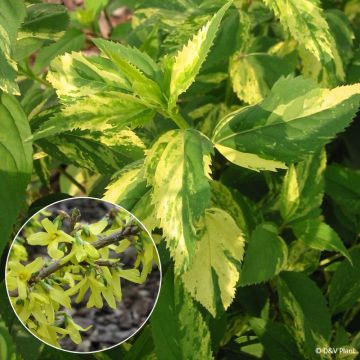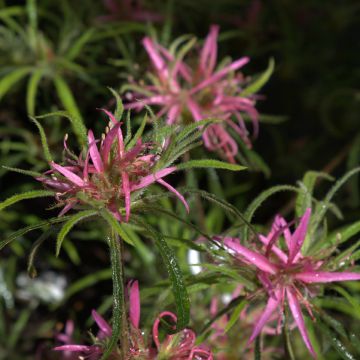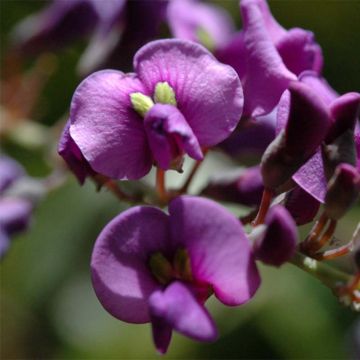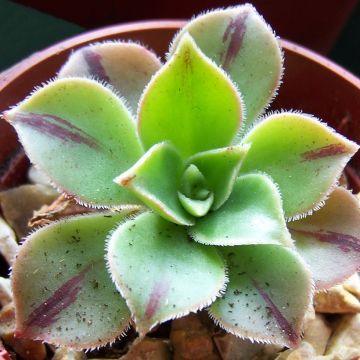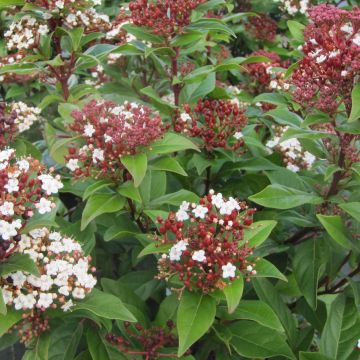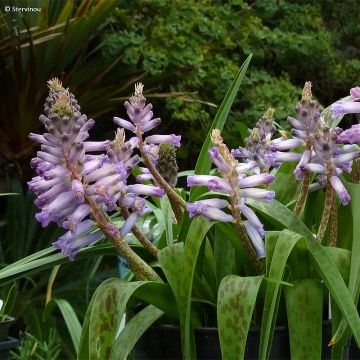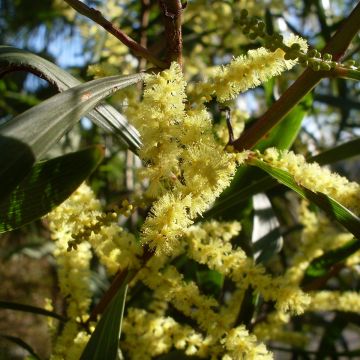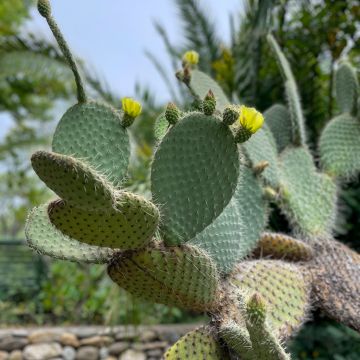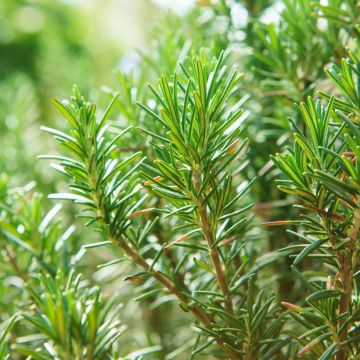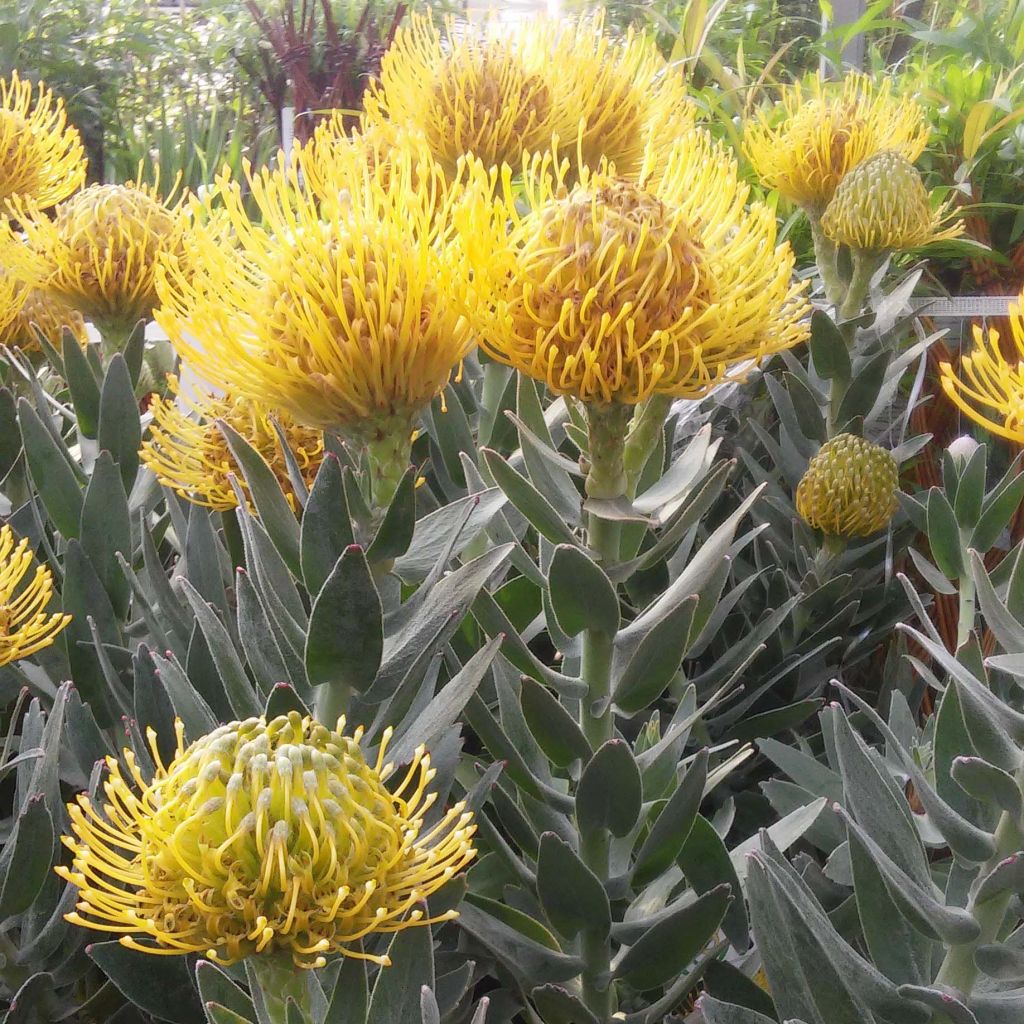

Leucospermum Copper Carnival - Pelote d'épingles Orange cuivré


Leucospermum Copper Carnival - Pelote d'épingles Orange cuivré
Leucospermum cordifolium Copper Carnival
Leucospermum x cordifolium Copper Carnival
Pincushion Protea, Pincushion Flower
Special offer!
Receive a €20 voucher for any order over €90 (excluding delivery costs, credit notes, and plastic-free options)!
1- Add your favorite plants to your cart.
2- Once you have reached €90, confirm your order (you can even choose the delivery date!).
3- As soon as your order is shipped, you will receive an email containing your voucher code, valid for 3 months (90 days).
Your voucher is unique and can only be used once, for any order with a minimum value of €20, excluding delivery costs.
Can be combined with other current offers, non-divisible and non-refundable.
Home or relay delivery (depending on size and destination)
Schedule delivery date,
and select date in basket
This plant carries a 24 months recovery warranty
More information
We guarantee the quality of our plants for a full growing cycle, and will replace at our expense any plant that fails to recover under normal climatic and planting conditions.
Would this plant suit my garden?
Set up your Plantfit profile →
Description
The Leucospermum cordifolium ‘Copper Carnaval’, commonly called Pin Cushion, is a bush of South African origin related to proteas. This compact and floriferous hybrid variety reaches a height of about 1.50 m (4 ft 11 in) and 1 m (3 ft 4 in) in span. Its long spring flowering is made of original inflorescences of an incandescent coppery yellow-orange. It is a seaside bush, well adapted to sea spray as well as to sandy and dry soils in summer, where it can constitute a magnificent specimen, with an exotic habit. Continental gardeners will appreciate its small size for cultivation in a container on the terrace, to be stored in winter.
The Leucospermum cordifolium ‘Copper Carnival’ belongs to the protea family, like the Grevillea and the Protea. The Leucospermum is native to South Africa, where it is found naturally in coastal heathlands and sclerophyllous (dry) forests. It spontaneously develops on sandy, acidic, leached and draining soils, but it adapts very well to both rocky and clayey (non-limestone) or more loamy soils. Its appearance and morphology vary greatly depending on its habitat, there are even several subspecies and ecotypes.
This small shrub, with a bushy and ramified habit, of rather slow growth, generally forms a rounded crown. It will on average reach 1.50 m (4 ft 11 in) in height and 1 m (3 ft 4 in) in span, depending on the cultivation conditions. Its branches are carried on one or several trunks with corky bark, which are covered with tough and glabrous leaves, of a medium green. They are densely grouped in a spiral around the stem. The flowering can take place from March to May, depending on the climate. It is not uncommon for the bush to flower more sporadically outside of these periods, depending on the regions. The pin cushion inflorescences are of a very remarkable coppery yellow-orange, so much so that one would think the plant is covered with small balls of fire! These flowers are appreciated by foraging insects. Most species of Leucospermum are pyrophytes, that is to say, they need the heat of fire to burst their fruits and release the seeds.
The Leucospermum ‘Copper Carnival’ is a quite sensational plant that does not leave anyone indifferent. Despite its lack of hardiness (up to -5°C for short periods), this bush is quite easy to cultivate in coastal gardens, in sandy and poor soil, regularly dried out in summer. Particularly adapted to the Mediterranean climate, it is content with dry to arid soils. This compact variety will be magnificent planted in a dry rock garden and of course in a pot on a terrace, but always in an open situation, in full sun. It will also be appreciated for its long vase life to compose fabulous bouquets with bright colours.
An original root system, adapted to poor and dry soils:
Plants growing in a soil poor in nutrients often form a symbiosis with soil fungi that promote the absorption of water and nutrients. But Proteaceae have chosen another strategy: they develop a large amount of special lateral roots all along their roots. These roots are called proteoid, and are induced by rain, they develop under the heap of dead leaves covering the base of the plant. Rain promotes the decomposition of leaves which results in the release of nutrients. These ephemeral roots usually dry up at the end of the growth period. They have a water and nutrient absorption activity twice as high as "normal" roots.
Report an error about the product description
Leucospermum cordifolium Copper Carnival in pictures
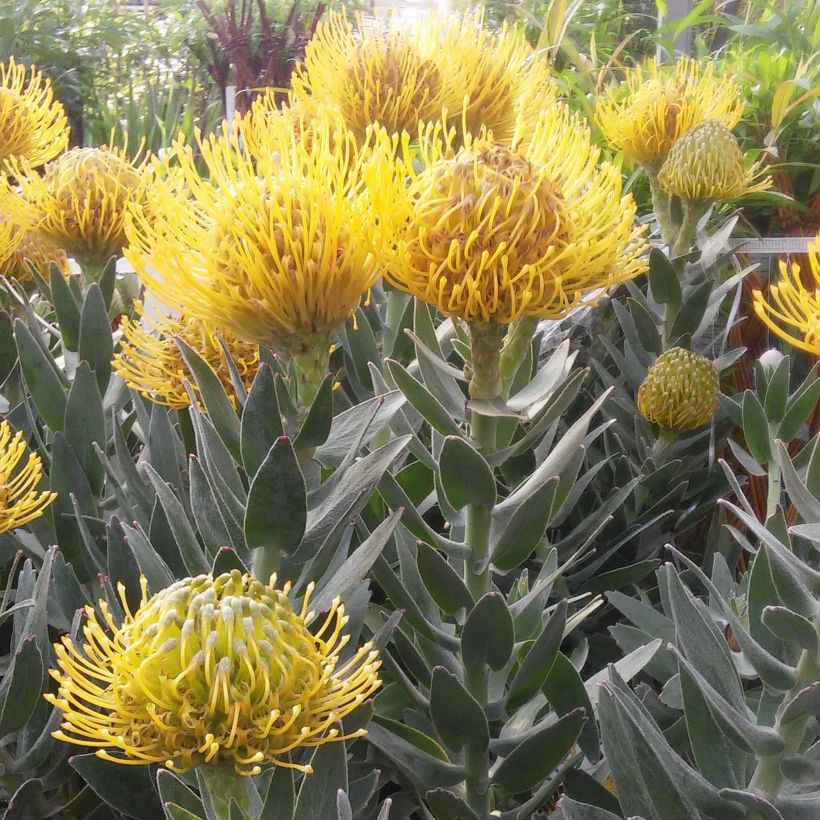

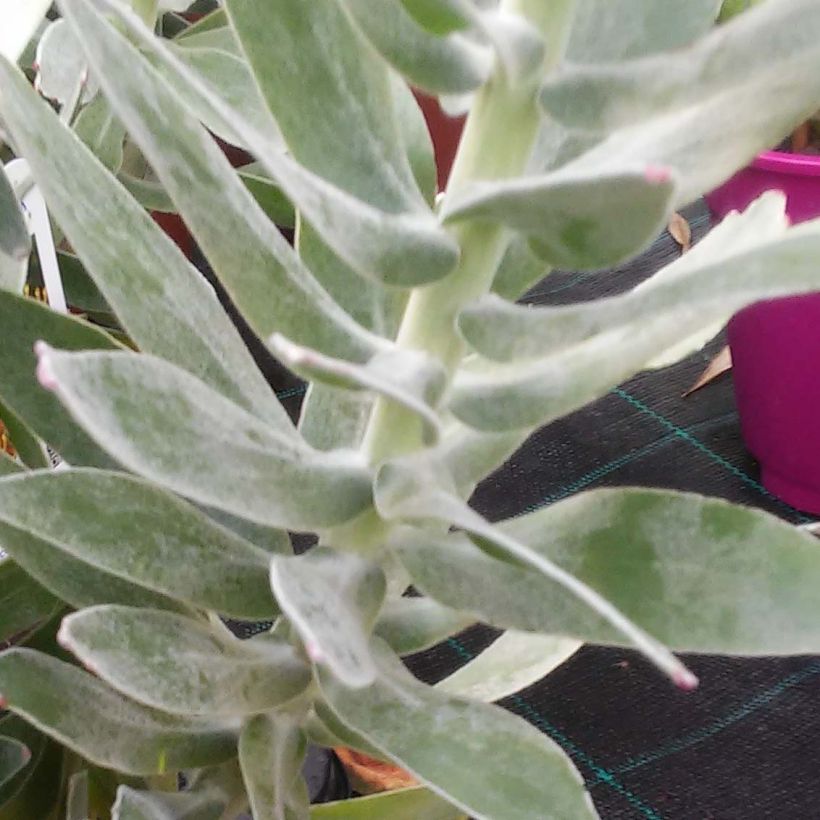

Plant habit
Flowering
Foliage
Botanical data
Leucospermum
x cordifolium
Copper Carnival
Proteaceae
Pincushion Protea, Pincushion Flower
South Africa
Other Shrubs A to Z
View all →Planting and care
In open ground, in regions spared by severe frosts, plant the Leucospermum in the spring, in a sunny exposure. This plant is quite tolerant towards the soil, but does not appreciate limestone and permanently wet soils. While it prefers a sandy soil with an acidic or neutral tendency (6.5<pH<7), it adapts well to loamy soils, or even clayey ones if they are drained and light. Water abundantly and rarely (20 l of water every 15 days) to help with recovery and encourage deep rooting, especially the first 2 summers if the weather remains dry. Stake your young plant for as long as it needs to be firmly rooted. Once well established, after 2 or 3 years of cultivation, a Leucospermum grown in the open ground can do without watering in summer, except in the event of exceptional drought. It perfectly withstands sea spray and wind. It can be affected by phytophthora, a fungal disease that attacks the roots and collar of certain woody plants in soils that are both wet and warm..
The proteaceae are sensitive to excess phosphates and nitrates, so it is necessary to avoid giving too much fertilizer, or any at all. A contribution of dried blood meal at the foot of the plant, in small doses, in the spring, is usually sufficient. While adult plants tolerate temporary frosts of around -5°C (23 °F) in dry soil, young Leucospermum, on the other hand, should be sheltered from frost during their early years, kept in a frost-free place in a cool climate or under a winter veil in regions with mild winters.
Indoors, it is important to ensure good room ventilation and to avoid atmospheres that are too dry and too hot. A lightly heated conservatory or a frost-free greenhouse will be perfect. A plant grown in a pot requires regular but spaced watering. Do not let the pot 'soak' in a saucer full of water, use a pot with holes in the bottom, taking care to arrange a bed of clay balls or gravel to promote drainage. In the winter period, watering should be reduced by half compared to normal, ensuring not to let the rootball completely dry out.
Take your Leucospermum outside after the last frosts, arrange a layer of compost poor in phosphorus on the surface of the soil, or a layer of well decomposed humus, mixed with a little sand.
Planting period
Intended location
Care
This item has not been reviewed yet - be the first to leave a review about it.
Similar products
Haven't found what you were looking for?
Hardiness is the lowest winter temperature a plant can endure without suffering serious damage or even dying. However, hardiness is affected by location (a sheltered area, such as a patio), protection (winter cover) and soil type (hardiness is improved by well-drained soil).

Photo Sharing Terms & Conditions
In order to encourage gardeners to interact and share their experiences, Promesse de fleurs offers various media enabling content to be uploaded onto its Site - in particular via the ‘Photo sharing’ module.
The User agrees to refrain from:
- Posting any content that is illegal, prejudicial, insulting, racist, inciteful to hatred, revisionist, contrary to public decency, that infringes on privacy or on the privacy rights of third parties, in particular the publicity rights of persons and goods, intellectual property rights, or the right to privacy.
- Submitting content on behalf of a third party;
- Impersonate the identity of a third party and/or publish any personal information about a third party;
In general, the User undertakes to refrain from any unethical behaviour.
All Content (in particular text, comments, files, images, photos, videos, creative works, etc.), which may be subject to property or intellectual property rights, image or other private rights, shall remain the property of the User, subject to the limited rights granted by the terms of the licence granted by Promesse de fleurs as stated below. Users are at liberty to publish or not to publish such Content on the Site, notably via the ‘Photo Sharing’ facility, and accept that this Content shall be made public and freely accessible, notably on the Internet.
Users further acknowledge, undertake to have ,and guarantee that they hold all necessary rights and permissions to publish such material on the Site, in particular with regard to the legislation in force pertaining to any privacy, property, intellectual property, image, or contractual rights, or rights of any other nature. By publishing such Content on the Site, Users acknowledge accepting full liability as publishers of the Content within the meaning of the law, and grant Promesse de fleurs, free of charge, an inclusive, worldwide licence for the said Content for the entire duration of its publication, including all reproduction, representation, up/downloading, displaying, performing, transmission, and storage rights.
Users also grant permission for their name to be linked to the Content and accept that this link may not always be made available.
By engaging in posting material, Users consent to their Content becoming automatically accessible on the Internet, in particular on other sites and/or blogs and/or web pages of the Promesse de fleurs site, including in particular social pages and the Promesse de fleurs catalogue.
Users may secure the removal of entrusted content free of charge by issuing a simple request via our contact form.
The flowering period indicated on our website applies to countries and regions located in USDA zone 8 (France, the United Kingdom, Ireland, the Netherlands, etc.)
It will vary according to where you live:
- In zones 9 to 10 (Italy, Spain, Greece, etc.), flowering will occur about 2 to 4 weeks earlier.
- In zones 6 to 7 (Germany, Poland, Slovenia, and lower mountainous regions), flowering will be delayed by 2 to 3 weeks.
- In zone 5 (Central Europe, Scandinavia), blooming will be delayed by 3 to 5 weeks.
In temperate climates, pruning of spring-flowering shrubs (forsythia, spireas, etc.) should be done just after flowering.
Pruning of summer-flowering shrubs (Indian Lilac, Perovskia, etc.) can be done in winter or spring.
In cold regions as well as with frost-sensitive plants, avoid pruning too early when severe frosts may still occur.
The planting period indicated on our website applies to countries and regions located in USDA zone 8 (France, United Kingdom, Ireland, Netherlands).
It will vary according to where you live:
- In Mediterranean zones (Marseille, Madrid, Milan, etc.), autumn and winter are the best planting periods.
- In continental zones (Strasbourg, Munich, Vienna, etc.), delay planting by 2 to 3 weeks in spring and bring it forward by 2 to 4 weeks in autumn.
- In mountainous regions (the Alps, Pyrenees, Carpathians, etc.), it is best to plant in late spring (May-June) or late summer (August-September).
The harvesting period indicated on our website applies to countries and regions in USDA zone 8 (France, England, Ireland, the Netherlands).
In colder areas (Scandinavia, Poland, Austria...) fruit and vegetable harvests are likely to be delayed by 3-4 weeks.
In warmer areas (Italy, Spain, Greece, etc.), harvesting will probably take place earlier, depending on weather conditions.
The sowing periods indicated on our website apply to countries and regions within USDA Zone 8 (France, UK, Ireland, Netherlands).
In colder areas (Scandinavia, Poland, Austria...), delay any outdoor sowing by 3-4 weeks, or sow under glass.
In warmer climes (Italy, Spain, Greece, etc.), bring outdoor sowing forward by a few weeks.
































